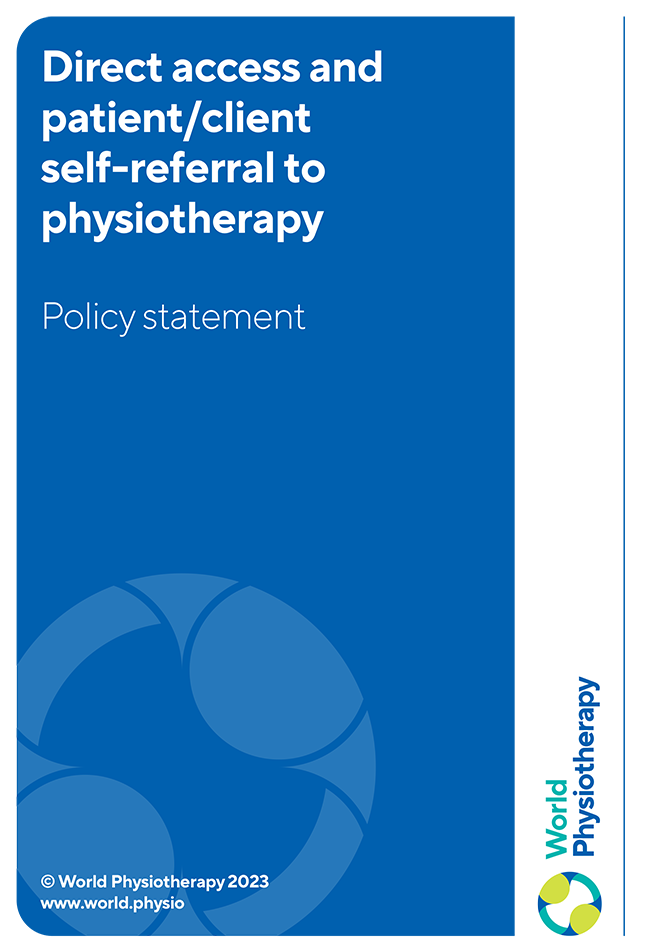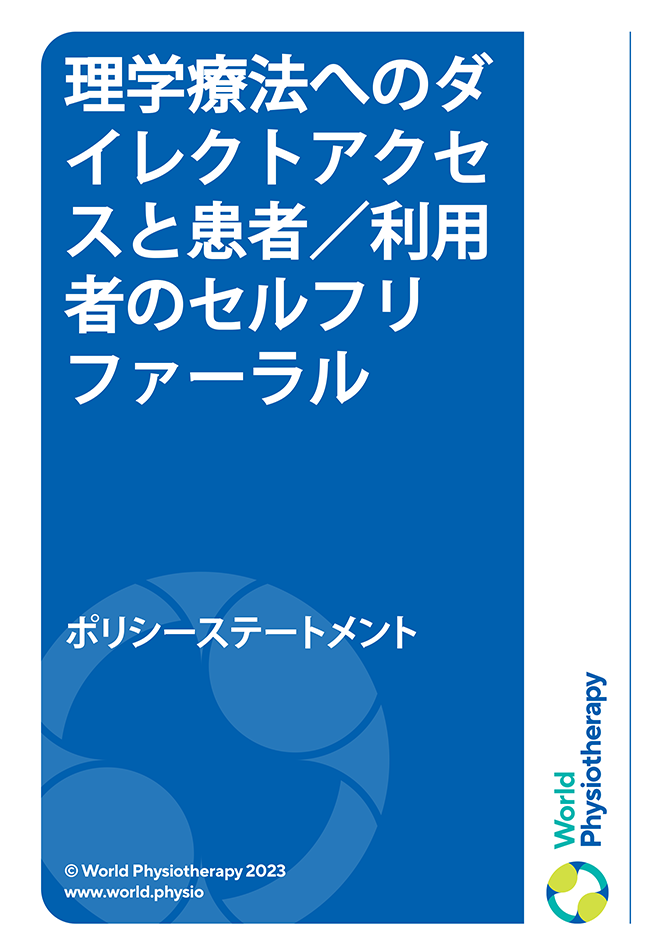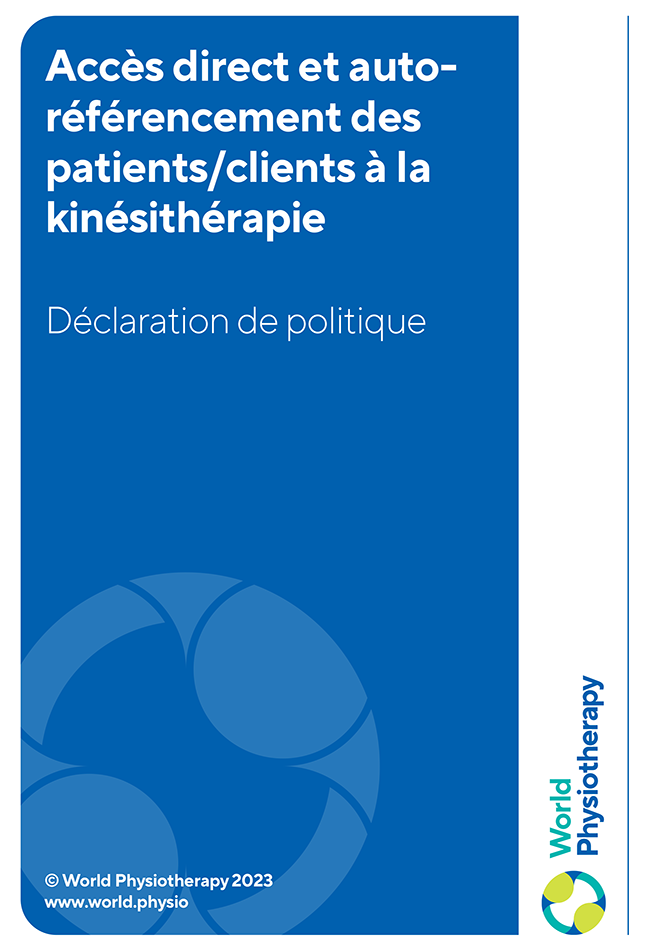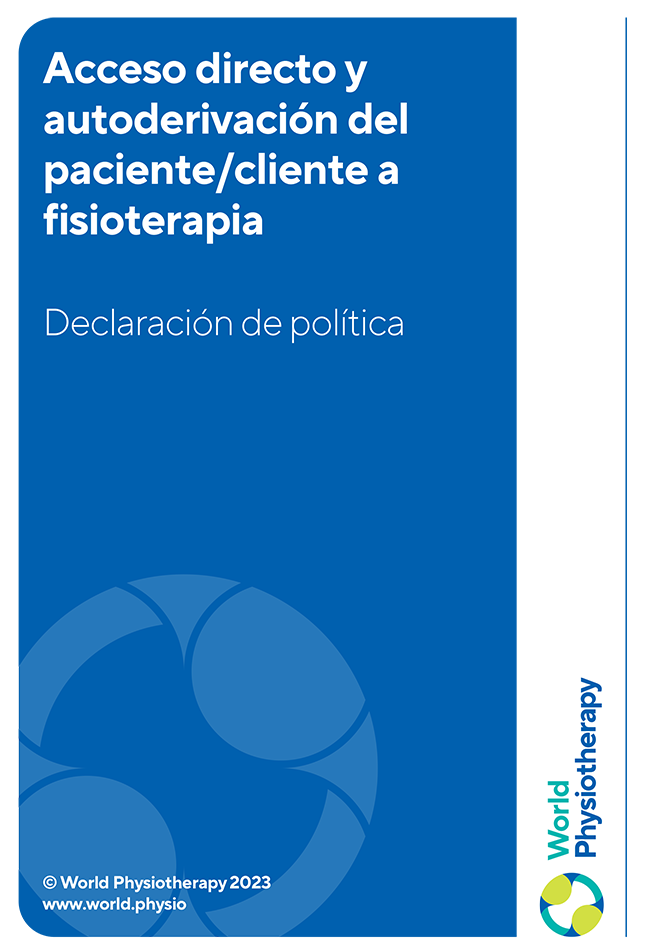World Physiotherapy advocates that direct accessDirect access:The patient/client directly asks the physical therapist to provide services (the patient/client refers themselves) and the physical therapist freely decides his/her conduct and takes full responsibility for it. Also, the physical therapist has direct access to patients/clients and determines their need for the physical therapist’s examination/assessment and intervention/treatment without referral from a third party.
See also Access to physical therapy
See also Self-referralView full list of glossary terms to physiotherapySee Physical therapy and patientPatient: An individual who is the recipient of physical therapy and direct interventions. A person for whom a health service accepts responsibility for treatment and/or care. Individuals who are recipients of physical therapy may also be referred to as clients or service users.
See also Client, Service userView full list of glossary terms/clientClient: a person, group or organisation eligible to receive services either directly or indirectly from a physiotherapist. The client is:
an individual who is not necessarily sick or injured but who can benefit from a physiotherapist’s consultation, professional advice, or services; or
a business, school system, and others to whom physiotherapists offer services.
See also Patient
See also Service userView full list of glossary terms self-referralSelf-referral: patients/clients are able to consult a physical therapist without having to see anyone else first. This relates to telephone, online or face-to-face services.
See also Access to physical therapy
See also Direct accessView full list of glossary terms will allow service users to meet their physiotherapySee Physical therapygoalsGoals: The intended impact on functioning (body functions and structures, activities, and participation) as a result of implementing the plan of care. Goals should be measurable, functionally driven, and time limited. If required, the goals may be classified as short-term and long-term.
See full list of glossary terms. PhysiotherapySee Physical therapy professional entry-level education prepares physiotherapists to be primary contact autonomous practitioners, able to examine/assess, evaluate, diagnose, intervene/treat, determine outcomes and discharge patients/clients without referral from another healthHealth: 'Health' is defined in the WHO constitution of 1948 as a state of complete physical, social and mental well-being, and not merely the absence of disease or infirmity.
See also Health promotionSee full list of glossary terms professional (eg medical practitioner) or other third party. Further, World Physiotherapy advocates for service developments and delivery models that allow patients/clients improved access to physiotherapySee Physical therapy services through the ability to refer themselves directly to a physiotherapistSee Physical therapist.
Policy statement: Direct access and patient/client self-referral to physiotherapy





